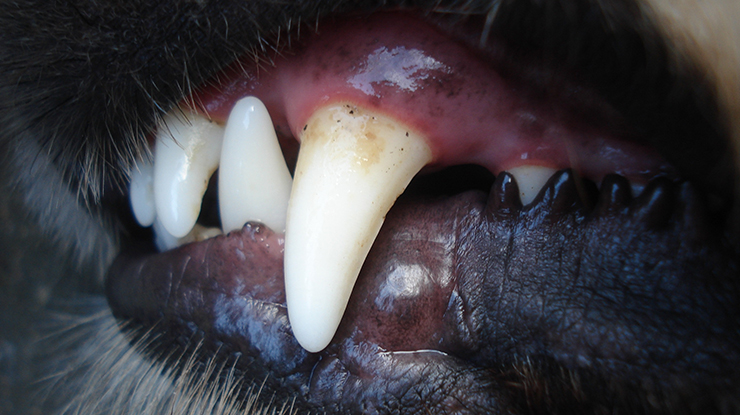
How to Prevent Tartar and Gingivitis in Dogs
By the age of three, most dogs exhibit signs of gum disease. This condition can have serious consequences, including loose teeth, bleeding gums and bad breath. If left untreated, gum disease may even lead to organ damage in older dogs.
Fortunately, you can evaluate the health of your dog's mouth on sight alone. Look for signs of plaque or tartar. Plaque is buildup on your dog's tooth. It may be white or dark in color. Tartar forms from untreated plaque. It is a hard substance that covers part or all of the tooth. Tartar may be yellow or brown.
If tartar is left untreated, it will lead to gingivitis, and then to a more serious periodontal disease that can cause organ damage.
Keeping your dog's mouth clean and tartar free is easier said than done because most dogs are not fond of the toothbrush. To help, we've put together some tips that you can follow each day to keep your dog's mouth tartar-free.
How to get your dog to like brushing
If possible, introduce your dog to the toothbrush early. Six to eight weeks old is ideal, but it's never too late. Choose a toothpaste flavor that your dog will like. For example, if chicken is her favorite dog food, start with a chicken-flavored toothpaste.
Begin by putting a small amount of toothpaste on your finger. Let your dog lick the toothpaste off when she is calm and seated. Once she begins looking forward to the toothpaste as a treat, start giving it to her from the toothbrush. After a few days of this, you may gently begin brushing your dog's teeth. Start slowly and gently before working your way up to a full brushing.
For the best results, brush your dog's teeth daily.

Other ways to keep your dog's mouth clean
In addition to brushing, there are other methods of keeping your dog's mouth clean. However, it's important to note that these are not replacements for daily brushing.
Chew toys
Some chew toys can do more harm than good. Avoid compressed rawhide toys that can chip your dog's teeth. Instead, opt for rubber chew toys. The chewing action can help keep teeth clean and smooth surfaces to prevent the risk of tooth chipping.
Dental treats
Look for treats infused with Chlorhexidine Gluconate, which provides an antimicrobial action that can help keep your dog's teeth free of harmful bacteria.
Homeopathic remedies
Homeopathic remedies are a form of alternative medicine that use herbs and other natural ingredients to address imbalances in your dog's body. Most remedies are targeted to a specific issue, such as tartar or gingivitis, but they are ultimately designed to treat the dog's health as a whole in order to bring the body back to a state of balance.
Regular dental cleanings
Even if you've been doing everything right, you may notice some plaque creeping into your dog's mouth. At the first sign of plaque or tartar, visit your veterinarian to discuss a dental cleaning for your dog. Dental cleanings for dogs are more involved than cleanings for humans because the dog requires a general anesthetic for the procedure, and a more advanced cleaning may take multiple visits.
----------
 Jennifer’s travels have brought her all over the world, but volunteering in a humanitarian capacity has always been the driving force behind her globetrotting. Her journeys have shaped her life and personality and have made her more compassionate and aware of the needs of those around her, both human and animal. Having been acquainted with homeopathy at a very early age, Jennifer believes in its capacity to restore good health and stamina, and feels compelled to share with others how well homeopathy has helped her personally. www.homeoanimal.com
Jennifer’s travels have brought her all over the world, but volunteering in a humanitarian capacity has always been the driving force behind her globetrotting. Her journeys have shaped her life and personality and have made her more compassionate and aware of the needs of those around her, both human and animal. Having been acquainted with homeopathy at a very early age, Jennifer believes in its capacity to restore good health and stamina, and feels compelled to share with others how well homeopathy has helped her personally. www.homeoanimal.com










